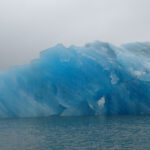Three years after bulk carrier MV Wakashio ran aground on a coral reef off Mauritius, spilling 1000 tonnes of a new type of marine fuel oil, Curtin University-led research has confirmed the oil is still present in an environmentally sensitive mangrove forest close to important Ramsar conservation sites.
Lead researcher Dr Alan Scarlett, from Curtin’s WA Organic and Isotope Geochemistry Centre in the School of Earth and Planetary Sciences, said the chemical ‘fingerprint’ of the oil found in the mangrove sediments was a near-perfect match for the Very Low Sulphur Fuel Oil (VLSFO) spilled by the Wakashio in 2020 – the first recorded spill involving this type of fuel.
“Local communities in Mauritius have been aware of oil contamination in the mangrove wetlands since the Wakashio spill, but no official confirmation had been made regarding the source,” Dr Scarlett said.
“Identifying and acknowledging this contamination is crucial, both for the people of Mauritius and for global understanding, as little is known about how this new marine fuel behaves once spilled.”
Dr Scarlett said samples from the mangrove wetlands, including a reference site thought to be unaffected by the spill, were analysed using advanced chemical techniques.
“We confirmed the reference site was free of oil contamination, while another site contained oil originating from the Wakashio’s fuel tanks,” Dr Scarlett said.
“We found the spilled oil had undergone substantial weathering and biodegradation in the three years since the accident and this had removed or reduced the levels of many of its toxic compounds.
“However, the ongoing presence of the oil could still pose an unknown risk to the sensitive mangrove ecosystem.”
In a previous collaboration with the Woods Hole Oceanographic Institution, the Curtin research team obtained a unique chemical ‘fingerprint’ of the spilled oil, which enabled them to confirm its presence in the mangrove sediments.
The study also compared the behaviour of the Wakashio‘s VLSFO with traditional marine heavy fuel oils using models developed from the National Oceanic and Atmospheric Administration’s oil spill scenario tool, WebGNOME-ADIOS.
“Our modelling suggested more of the Wakashio’s fuel would evaporate, naturally disperse or sink compared to traditional fuels, but assessing the impact on organisms remains challenging,” Dr Scarlett said.
The research, titled ‘Very Low Sulfur Fuel Oil spilled from the MV Wakashio in 2020 remains in sediments in a Mauritius mangrove ecosystem nearly three years after the grounding’, was published in Marine Pollution Bulletin.



